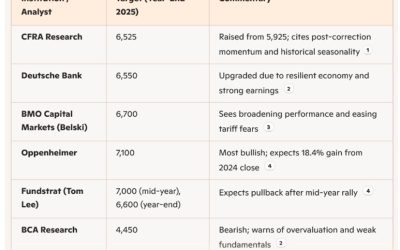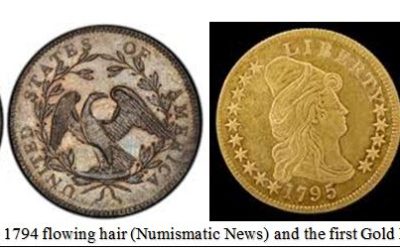by Bryan Perry
October 15, 2024
Third-quarter earnings season is getting off to a good start, with solid numbers coming from the big money center banks. There is rising optimism that the torch-bearing tech sector will deliver strong Q3 sales and earnings as capital investment into AI continues to be robust, according to Wall Street analysts.
The Atlanta Fed has bumped its growth rate for the third quarter back to 3.2%, from its prior revision to 2.5%, implying that they see the recent half-point rate cut by the Fed as positive for corporate earnings.
Graphs are for illustrative and discussion purposes only. Please read important disclosures at the end of this commentary.
The back half of October is historically bullish, partly due to earnings season. This time around, there is over $6 trillion in cash on the sidelines and gas prices are back under $3.00 per gallon in many parts of the country, so that’s a good set up for a higher stock market going into the final weeks before the election.
The most recent (September) employment and inflation data may have set back expectations for further aggressive rate cuts for the balance of 2024. As of October 11, the CME FedWatch Tool forecasts a 90% probability of a quarter-point rate cut at the November 7 FOMC meeting and an 84% chance of another quarter-point cut at the December 18 meeting, which would have the Fed funds rate ending the year at 4.25%-4.50%, but this glide path is absolutely bullish for bonds as well as dividend growth stocks.
There are many stocks that now sport dividend yields that rival Treasury or investment grade corporate bond yields. The big advantage of dividend income versus corresponding fixed income yields is the tax treatment of income. Fixed income is taxed at ordinary income tax rates, per the investor’s tax bracket. The maximum rate applied to qualified dividends is 20%. The highest federal tax rate for income is 37%.
Translated, a bond paying 4% to a high-income earner, nets 2.52%, whereas a qualified dividend paying 4% pays out a net yield of 3.2% This is a material difference when you consider inflation and the fact that “It’s not what you make, but what you keep.” At present, annual inflation is running at 2.4%, so earning 4% in the fixed income market, adjusted for inflation, is often a zero-sum game for high-income earners.
Graphs are for illustrative and discussion purposes only. Please read important disclosures at the end of this commentary.
The main challenge for investors seeking high dividend yields is that dividend growth hasn’t kept up with the market. Dividend yields from blue-chip U.S. companies have been trending downwards over time, as evidenced by the Standard & Poor’s 500 Index dividend yield of approximately 1.78% at year-end 2022, trending lower throughout 2023 and currently only 1.21% for the SPDR S&P 500 Index ETF (SPY).
This 1.21% yield is well under the index’s long-run average yield of 2.91%. In fact, dividend yields have remained relatively low (below 3%) since 1992. This slowing of dividend growth over time is one more sign that smaller (lower) dividends remain “the new normal.” A quick review of the history of the S&P 500 reveals just how abnormal these sub-3% annual yields have been – for the last 150 years. Because of highly proactive monetary policy and the rise of technology stocks, today’s dividend investors have a bigger challenge to find great yields among great stocks. But, they are out there, just not in big numbers.
Graphs are for illustrative and discussion purposes only. Please read important disclosures at the end of this commentary.
The sharp change in S&P 500 dividend yield traces back to the 1990s. For example, the average dividend yield between 1970 and 1990 was 4.21%, according to NYU Stern’s Aswath Damodaran. It declined to 1.95% between 1991 and 2007. After a brief climb to about 3.15% during the peak of the 2008 Great Recession, the annual S&P 500 dividend yield averaged just 1.98% between 2009 and 2019. From 2020 on, the dividend yield fell below 2% and has stayed between 1.24% to 1.78% since then.
Looking at the S&P 500’s 11 sectors, the highest yielding sectors are the Utilities Select Sector SPDR ETF (XLU), paying 2.79%, and the Consumer Staples Select Sector SPDR ETF (XLP), paying 2.58%, so it seems clear that conventional ETF sector investing can’t satisfy the need for qualified dividend yields. This is where investors will have to exercise due diligence to find some blue-chip (and maybe some not-so-blue-chip) stocks that pay dividend yields in excess of 4% to stay ahead of long-term inflation and the tax man. This is the new world we live in, and it is only going to get more difficult.
There are just a handful of stocks in which a well-rounded portfolio of dividend stocks can be crafted as this new lower rate cycle takes hold. Here are a few examples of blue-chip stocks that fit the profile of paying outsized yields and have bullish chart patterns (moving up and to the right).
Bryan Perry has no position in these stocks
It’s an ideal time to lock in qualified dividend yields – and look for potential capital gains as well.
Navellier & Associates owns Verizon Communications Inc. (VZ), and Bristol Meyers Squibb Co. (BMY), in some managed accounts. We do not own AT&T (T) Dominion Energy Inc. (D), Kinder Morgan Inc. (KMI), Prudential Financial, Inc. (PRU), in managed accounts. Bryan Perry does not personally own Verizon Communications Inc. (VZ), AT&T (T) Dominion Energy Inc. (D), Kinder Morgan Inc. (KMI), Bristol Meyers Squibb Co. (BMY), Prudential Financial Inc. (PRU).
The post 10-15-24: The Challenge of Finding High-Quality Yields in a Rising Market appeared first on Navellier.






